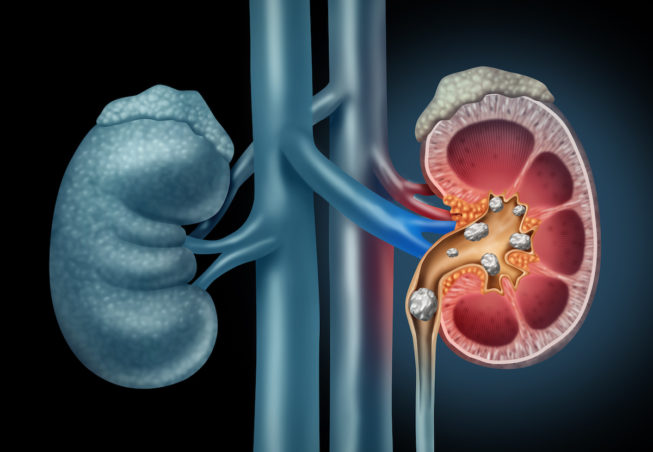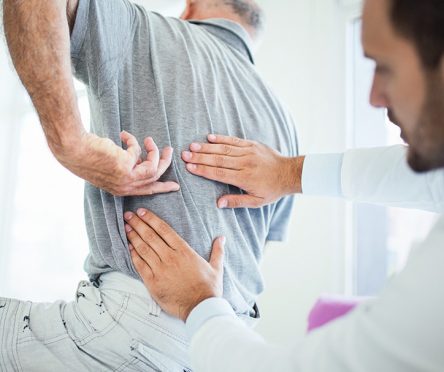The summer season has arrived and we’ve already seen temperatures hover around 90 degrees and higher. That means it’s prime time for a kidney stone to form.
“Anyone who’s been through a stone doesn’t want to go through another one,” says Dr. John Griffith, a board-certified urologist with the Tallwood Urology & Kidney Institute in Plainville.

Dr. Griffith says kidney stones form based on diet and genetics. This time of year ,as the mercury starts to climb, people become dehydrated – and that often leads to a spike in kidney stones.
“There are minerals in the urine and if you drink enough fluid it will dilute those minerals,” says Dr. Griffith. “But if you don’t drink enough fluid the minerals can precipitate into a stone and once it forms it starts to pass from the kidney down into the tube that drains the kidney, and that’s when you run into the pain.”
Symptoms of a kidney stone include:
- Severe or sharp pain in the upper back or side of the abdomen.
- Pain radiating towards the groin.
- Nausea or vomiting.
- Blood in urine.
 “Some of the more concerning things are if a patient has those symptoms, but then they develop a fever. A fever indicates there could be an infection behind the stone and that should prompt very quick medical attention,” says Dr. Griffith.
“Some of the more concerning things are if a patient has those symptoms, but then they develop a fever. A fever indicates there could be an infection behind the stone and that should prompt very quick medical attention,” says Dr. Griffith.
Dr. Griffith is also part of the Tallwood Kidney Stone Center, which was launched by Hartford HealthCare. The program, coordinated with the help of a nurse navigator, can get patients in immediately within a day or within a week, depending on the acuity of the situation. The program draws together the experience of urologists, nephrologists and interventional radiologists to help someone manage their pain, and get rid of their stone. The treatment is customized based on the size, location and composition of the stone.
A kidney stone will either pass on its own or need to be physically removed with the help of therapy or specific procedures. The Kidney Stone Center has a wide range of treatment options, but Dr. Griffith reminds patients that there is a four to six week window of time for medical intervention to occur if a stone is not passing on its own.
“If the kidney remains blocked for any longer than that you risk long-term kidney dysfunction,” Dr. Griffith says. “If a patient has uncontrolled pain, nausea or vomiting – it’s an indication that medical intervention is necessary to remove the stone.
Urologists at the Kidney Stone Center also work with patients to prevent another stone from developing, which is often a common occurrence. “Roughly 50 percent of patients who form a stone will form another one,” says Dr. Griffith.


